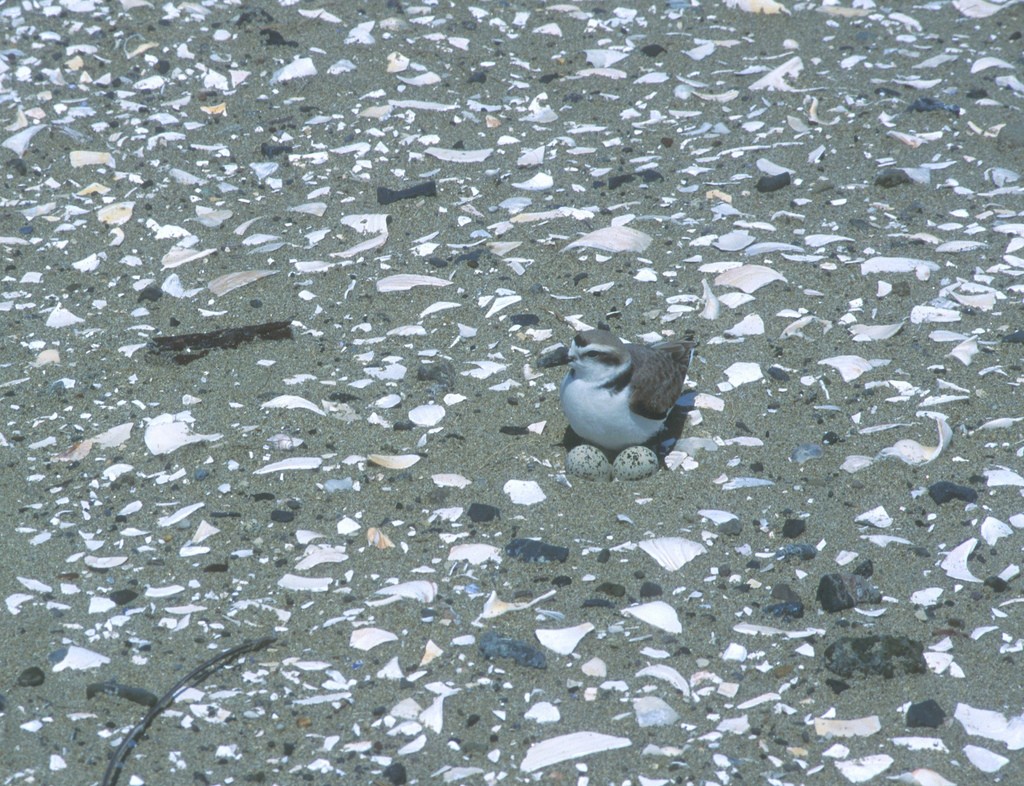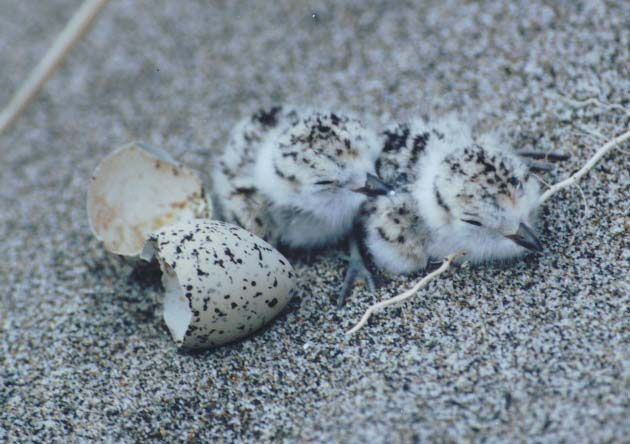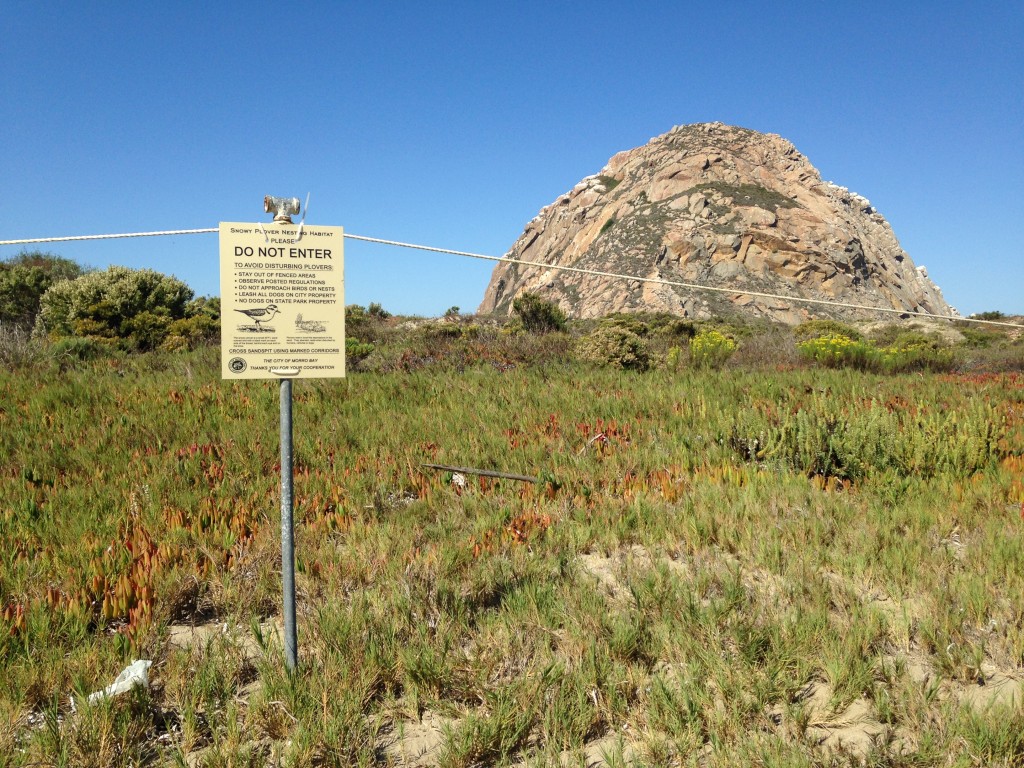Western snowy plovers can be hard to see. These shorebirds are small—just about the size of a sparrow. On top of that, they blend in well with the sand and lay their speckled eggs in shallow scrapes or depressions in dune habitat, along beaches, and in other sandy areas.

Because it’s so hard to spot these birds, well-meaning beachgoers can accidentally wreak havoc on snowy plover nesting sites. Wandering too close to a nest can frighten an adult plover away, causing it to abandon incubating its eggs. Accidentally walking through a nesting site can destroy it.
Though these birds are small, they are an important part of the ecosystem, and it’s important to protect them. Unfortunately, snowy plover populations have declined over the years, largely due to disturbance, habitat encroachment, and predation by both native and introduced animals. They were listed as threatened under the federal Endangered Species Act in 1993. The number of snowy plover breeding sites has decreased, too. In California, there were over 50 sites before 1970, but only half remain today, according to California State Parks.

The Morro Bay sandspit is one of the breeding sites that remains active—a survey conducted in May of 2015 found 156 snowy plovers on various parts of the sandspit. In order to help residents and visitors steer clear of snowy plovers and their nests, the City of Morro Bay and California State Parks has put up symbolic fencing during nesting times (March through September) since 2001.
These long, yellow lengths of rope can be found winding along the edge of the sandspit and creating safe paths through the dunes. Rather than keeping people out by force, this fencing serves as a reminder that the boundaries of snowy plover habitat should be respected to protect these birds.

California State Parks has also partnered with the Morro Coast Audubon Society to run a Habitat Conservation and Plover Recovery Program. Amongst other duties, volunteers in this program help keep watch over the fencing and educate visitors about the efforts to protect snowy plovers in Morro Bay and beyond.
To be a responsible neighbor to Morro Bay’s snowy plovers, please remember to:
- Stay outside of the symbolic fencing on the sandspit, along Morro Strand State Beach, and anywhere else you find it.
- Keep your furry companion on a leash at the beach—even the most well-trained and gentle dog can frighten a plover off its nest.
- Don’t fly kites over possible snowy plover habitat. The birds can mistake them for predatory birds and abandon their nests.
- Find more tips in this snowy plover handout from California State Parks.